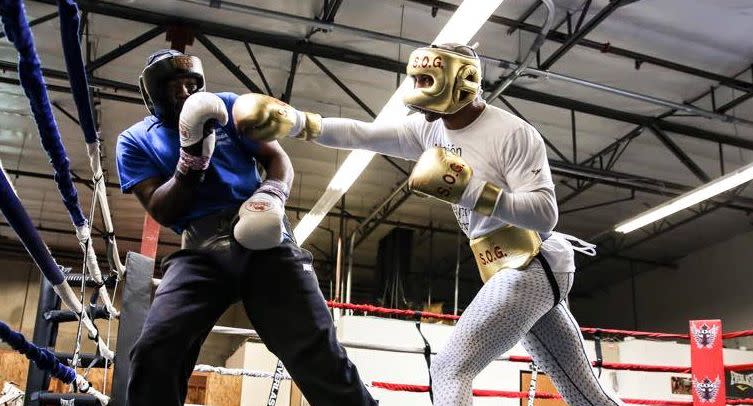5 Tips To Help Improve Your Counterpunching Skills In Boxing

There’s so much more to boxing than just the usual offence and defence. It’s an incredibly layered discipline with a specific science to its numerous techniques. It’s no wonder practitioners and enthusiasts often refer to it as ‘the sweet science.’
Everyone loves heading to the boxing gym after a stressful day at work to let off some steam. But if you want to take your boxing to the next level, however, you need to do more than just train in the boxing gym. You need to study and educate yourself to make sure you understand concepts. One important aspect of boxing that’s important to understand is counterpunching.
Counterpunching is somewhat of a lost art in boxing. While most training programs have students focused on come-forward offence, there is a method to counterpunching that proves invaluable in any skill set.
If you’re looking to improve in the area of counterpunching, there are a few things you should consider. These points will help you take your counterpunching game to the next level. You’ll be a counterpunching ace in no time
Today, Evolve Daily shares five tips to help improve your counterpunching skills in boxing.
1) Anticipate, don’t wait
The common misconception with counterpunching is that you must wait for your opponent to come forward on the offensive, and react with counters. That is simply not true, and will lead to you getting outworked in the ring. Instead, seek to anticipate an opponent’s attack, rather than merely waiting.
If you can launch your counters simultaneous to an opponent’s attack, he or she will have less time to make adjustments, and your counters will be more effective.
Though he isn’t considered a great boxer by any means, UFC superstar Conor McGregor said it best: “Precision beats power, and timing beats speed.” When it comes to counterpunching, this couldn’t be more true.
By gaining the ability to anticipate an opponent’s punches rather than waiting to react to them, you can time your counters to increase the probability of success.
2) Improve your muscle memory
When you’re just starting out, counterpunching may seem like an active mental exercise, where you have to constantly think about how you will react to a certain punch and what counter to use in certain situations. The more adept you become in counterpunching, the less of a mental task it becomes.
The main reason for this is because of muscle memory. The more you train your counterpunching, the more it becomes second nature to you. You can improve your muscle memory through punching and combination exercises in the focus mitts, shadowboxing, and the heavy bag.
With better muscle memory, your counterpunching efficiency is enhanced exponentially. You gain the ability to execute counters based on reflexes alone, as your mind reduces the processing time in between punches.
3) Work on your reflexes
A good counterpuncher in boxing has to have good reflexes. It’s a prerequisite to counterpunching.
A boxer with good reflexes is one that responds quickly to a stimulus, usually with split-second timing. Being able to see an opponent’s offence coming, mentally choose how to react, and then launch a counter offensive is a skill every good boxer should have. If anything, boxing is a battle of reflexes.
There are many key aspects that are involved in winning a boxing match, things like strategy, physicality, and skill. But without the reflexes necessary to execute techniques at the right time, none of those qualities will help you.
In boxing, however, fighters must have structured reflexes, as opposed to just being quick to react. There’s a stark difference between moving your head to evade a punch instinctively and slipping a punch to come back with a power shot.
4) Spar with an aggressive opponent

One way to develop better counterpunching reflexes is by training with real fight application in mind. This can be achieved through specific sparring conditions, particularly sparring with an overly aggressive come-forward opponent. Offensive-minded sparring partners will give you a multitude of opportunities to practice your counters.
So the next time you’re in the ring during sparring, it’s time to tell your sparring partner to attack. As a counterpuncher, you need to train your mind to recognise potential countering opportunities, an opening in your opponent’s glove guard, habitual characteristics that you can exploit, and specific opportunities to counter that may arise during the ebb and flow of a fight.
You want to train yourself to respond effectively to a stimulus, rather than just being fast enough to respond. This can be trained in sparring.
5) Learn from the best
They say imitation is the best form of flattery, and in boxing, this can’t be more true. If you want to be the best, you have to learn from the best. This means constantly studying tape of legends who have proven themselves time and again.
Some of the greatest counterpunchers in history include legendary Mexican warriors Erik Morales and Juan Manuel Marquez, pound-for-pound great Floyd Mayweather Jr., multiple-division world champion James Toney, and icons Sugar Ray Robinson and Muhammad Ali.
By watching tape of their previous ring wars, paying close attention to how they set up their counters and how they reacted in certain situations, and then applying it to your own game, you can take their best techniques and add them to your skillset.
It’s no different from watching Michael Jordan sink a turnaround fadeaway jumper, and then heading to the basketball court to give it a shot. Learn from the best. It’s a great way to improve your skills.
This article, 5 Tips To Help Improve Your Counterpunching Skills In Boxing, originally appeared on Evolve MMA, Asia’s No. 1 martial arts organisation.


